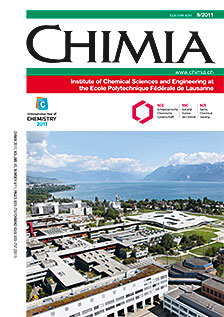Pushing the Frontiers of First-Principles Based Computer Simulations of Chemical and Biological Systems
DOI:
https://doi.org/10.2533/chimia.2011.667Keywords:
Anti-cancer, Dna repair, Excited states, First-principles molecular dynamics, Force matching, Gpcr, Gramicidin, Nonadiabatic dynamics, Prion, Qm/mm simulations, Solar cells, Time-dependent density functional theoryAbstract
The Laboratory of Computational Chemistry and Biochemistry is active in the development and application of first-principles based simulations of complex chemical and biochemical phenomena. Here, we review some of our recent efforts in extending these methods to larger systems, longer time scales and increased accuracies. Their versatility is illustrated with a diverse range of applications, ranging from the determination of the gas phase structure of the cyclic decapeptide gramicidin S, to the study of G protein coupled receptors, the interaction of transition metal based anti-cancer agents with protein targets, the mechanism of action of DNA repair enzymes, the role of metal ions in neurodegenerative diseases and the computational design of dye-sensitized solar cells. Many of these projects are done in collaboration with experimental groups from the Institute of Chemical Sciences and Engineering (ISIC) at the EPFL.Downloads
Published
2011-09-30
Issue
Section
Scientific Articles
License
Copyright (c) 2011 Swiss Chemical Society

This work is licensed under a Creative Commons Attribution-NonCommercial 4.0 International License.
How to Cite
[1]
E. Brunk, I. Tavernelli, S. Vanni, T. J. Penfold, G. Palermo, M. Neri, M. Micciarelli, A. Laktionov, J. Garrec, M. Doemer, P. Diamantis, B. F. E. Curchod, F. F. de Carvalho, P. Campomanes, P. Athri, N. Ashari, U. Rothlisberger, Chimia 2011, 65, 667, DOI: 10.2533/chimia.2011.667.







